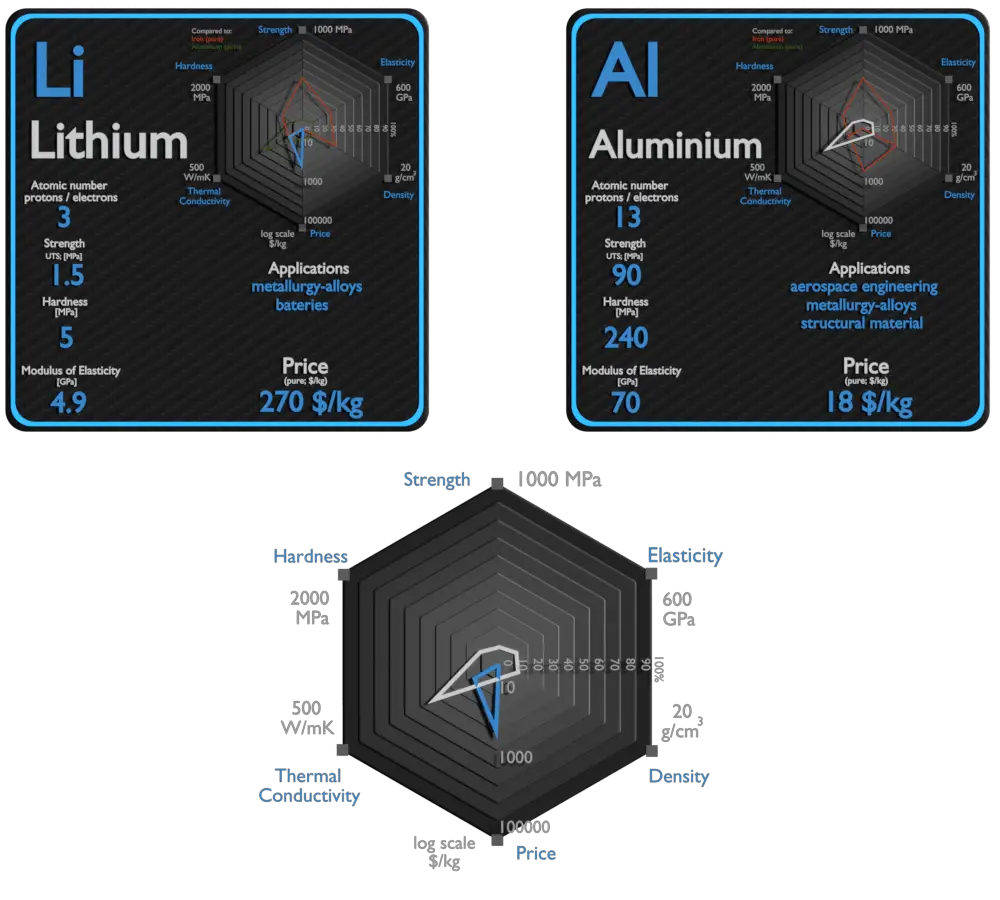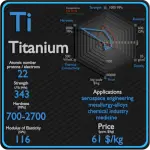This article contains comparison of key thermal and atomic properties of lithium and aluminium, two comparable chemical elements from the periodic table. It also contains basic descriptions and applications of both elements. Lithium vs Aluminium.

Lithium and Aluminium – About Elements


Source: www.luciteria.com
Lithium and Aluminium – Applications
Lithium
Lithium has many applications, from lubricating grease, alloying additions in particular for aluminium and magnesium alloys, to glazes for ceramics, and finally, lithium batteries. In particular, lithium is and will continue to play an increasingly important role in the battery-powered clean air future. Lithium batteries are widely used in portable consumer electronic devices, and in electric vehicles ranging from full sized vehicles to radio controlled toys. The term “lithium battery” refers to a family of different lithium-metal chemistries, comprising many types of cathodes and electrolytes but all with metallic lithium as the anode.
Aluminium
Aluminium and its alloys are used widely in aerospace, automotive, architectural, lithographic, packaging, electrical and electronic applications. It is the prime material of construction for the aircraft industry throughout most of its history. About 70% of commercial civil aircraft airframes are made from aluminium alloys, and without aluminium civil aviation would not be economically viable. Automotive industry now includes aluminium as engine castings, wheels, radiators and increasingly as body parts. 6111 aluminium and 2008 aluminium alloy are extensively used for external automotive body panels. Cylinder blocks and crankcases are often cast made of aluminium alloys.
Lithium and Aluminium – Comparison in Table
| Element | Lithium | Aluminium |
| Density | 0.535 g/cm3 | 2.7 g/cm3 |
| Ultimate Tensile Strength | 1.5 MPa | 90 MPa (pure), 600 MPa (alloys) |
| Yield Strength | N/A | 11 MPa (pure), 400 MPa (alloys) |
| Young’s Modulus of Elasticity | 4.9 GPa | 70 GPa |
| Mohs Scale | 0.6 | 2.8 |
| Brinell Hardness | 5 MPa | 240 MPa |
| Vickers Hardness | N/A | 167 MPa |
| Melting Point | 180.5 °C | 660 °C |
| Boiling Point | 1342 °C | 2467 °C |
| Thermal Conductivity | 85 W/mK | 237 W/mK |
| Thermal Expansion Coefficient | 46 µm/mK | 23.1 µm/mK |
| Specific Heat | 3.6 J/g K | 0.9 J/g K |
| Heat of Fusion | 3 kJ/mol | 10.79 kJ/mol |
| Heat of Vaporization | 145.92 kJ/mol | 293.4 kJ/mol |





















